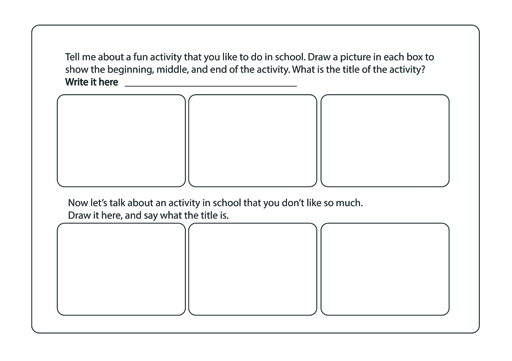3.1 Homework case study
This is an example of homework that a child and a family member do together. It could be with a parent, a grandparent, or an older sibling.
Now let’s talk about an activity in school that you don’t like so much. Draw it here, and say what the title is.
This homework develops a child’s vocabulary and expressive language skills, and an understanding of narrative structures (beginning, middle, end). The homework develops these language skills through conversation, not drilling. It creates an opportunity for the child and an adult to talk together about school, and for the child to share their thoughts and feelings. It is a chance for the adult to ask questions such as ‘Why do you like, or not like, doing this so much?’, ‘Tell me more about this part’ and ‘What happened next?’ Talking and drawing are, for young children – and for many older children, and adults too – good ways to ‘draft’ or prepare for writing.
Next, you will learn about parents’ involvement in children’s homework around the world.

